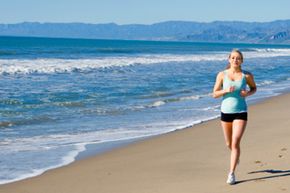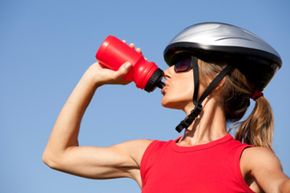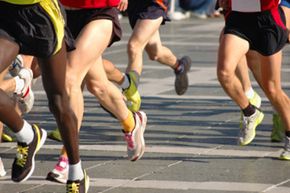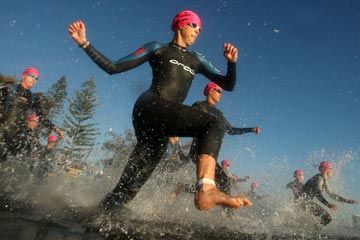Anyone capable of running, swimming and riding a bicycle can become a triathlete. There are thousands of triathlon events around the world each year on every continent -- with the exception of Antarctica. (If you want to organize a triathlon in Antarctica, go right ahead, but finding weather conditions that are favorable to triathlon events might be difficult.) There are triathletes in their teens, triathletes in their 80s and triathletes of all ages in between.
The triathlon, which was invented in 1974 and became an Olympic sport in 2000, consists of three different events and the transitions between them: a swimming event, a bicycling event and a running event. The distance that you'll be expected to travel in each of these depends on what type of triathlon you're participating in. The most popular is the Sprint Triathlon, where you'll swim for 750 meters (just under half a mile), cycle for 20 kilometers (roughly 12.5 miles) and run for five kilometers (roughly three miles). In an Ironman Triathlon, on the other hand, you'll swim 3.86 kilometers (roughly 2.5 miles), cycle for 180 kilometers (120 miles) and run for 42.2 kilometers (26.2 miles). That's the equivalent of running an Olympic-length marathon after you've already had a supersized workout of swimming and biking. No wonder they call it the "Ironman." Of course, there are more than a few Ironwomen involved in these triathlons as well.
Advertisement
Needless to say, a triathlete has to be in good shape. But even someone who starts out in great physical condition has to spend weeks training for these specific events as well as for the transitions between them. After all, climbing out of a body of water and jumping onto a bicycle isn't as easy as it sounds, especially when you're surrounded by a crowd of several dozen other triathletes. You'll find plenty of books and Web sites that will tell you what sort of activities to perform to get yourself triathlon ready and you'll need to keep training on a fairly regular basis in the weeks leading up to the event, with several hours a day devoted to building strength, endurance and skill.
But what if the weather doesn't cooperate? If you're a dedicated triathlete, we're sure you'd be willing to train in the rain and maybe even in the snow if you had to, but hot weather presents special challenges to all athletes and to triathletes in particular. Over the next few pages, we'll discuss the dangers of training in the heat (which can include disabling injury and even death), and we'll suggest what you can do to keep your triathlon training safe and effective even in the hottest weather.
Advertisement



